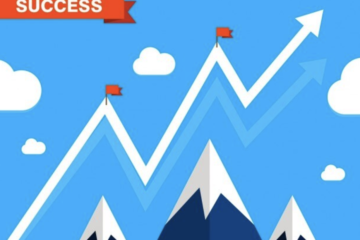SDGs and Agenda 21 / Agenda 2030 analysis

The UN sustainable development goals are, according to the UN, 17 goals adopted by all United Nations members to provide a blueprint for peace and prosperity for the world.
This article will be covering 3 of these goals and discussing these solutions proposed by the UN.
Goal 1 — No poverty
I have covered this in my article here, on raising living standards in Thailand.
What is the root cause of poverty?
It’s simply the lack of access to the basics of life: finance, food, water, and shelter.
So what would it take to raise poverty standards?
It would be giving people access to finances through FinTech (financial technology).
It would be raising the living situation through better real estate and it would be getting people access to clean water and good food.
It all comes down to having a zero poverty line, to having a strong ecosystem within cities.
These are items that I am currently seeing being tackled in many developing countries.
Goal 7 – Affordable and Clean Energy
In this section, we will talk about specifically solar.
Although the solar industry is still new, it is gaining pace and this trend does not seem to be stopping anytime soon.
Many new-tech entrepreneurs like Elon Musk believes that the sun will one day power all of civilization.
Many companies, in the manufacturing field have begun adopting solar as part of a cost-effective strategy for power generation. Although still in its developmental phase, the ability to utilize the sun is something that will revolutionize all industries.
The way the Earth is utilizing its fossil fuels is simply unsustainable with many sources saying that resources such as natural gas and coal may run out as early as 2050.
At its pinnacle, the “dyson sphere” is an example of utilizing solar energy to the maximum. This Dyson Sphere is a megastructure that encompasses the sun, using this to absorb its energies and to redistribute it amongst the planet’s inhabitants. Type II civilizations by the Kardashev scale can be seen as maximizing the use of solar however we are far from there yet.
For now, solar is a stepping stone into the future.
Goal 12-Responsible Consumption and Production
Production & waste around the world has hit its all time since the dawn of the new decade (2020).
With many countries actively banning plastics such as PVC. New technologies of sustainable plastic and recycling must be employed for the continuation of our environment.
This is what you would call the circular economy. The linear economy, would be when production ends at the waste dump which contributes more onto one’s carbon footprint and the environment’s pollution. A circular economy on the other hand is where all production is recycled into the current economy which contributes to the Earth’s sustainability.
This helps improve one’s carbon footprint and environment.
Conclusion
Although we have seen the sustainable development goal (SDG) initiative by the UN is a very real and beneficial movement. I must warn that to make sure that this must be a decentralized initiative from grassroots rather than having the UN and its investment bankers dictate policy.
There has been many cases of insiders and conspiracy researchers exposing the agenda for being a corrupted initiative, that’s just there to create control. I do not know what is the real answer here but these are legitimate concerns that must be addressed.
On paper, the SDGs are impressive goals to have but we must remember that whatever good goal you have can be corrupted by individuals in power that do not have the best of intentions for humanity.
Keep the goals, but take control of them. We after all, don’t want a repeat of the “old society” where the few controls the many.



0 Comments